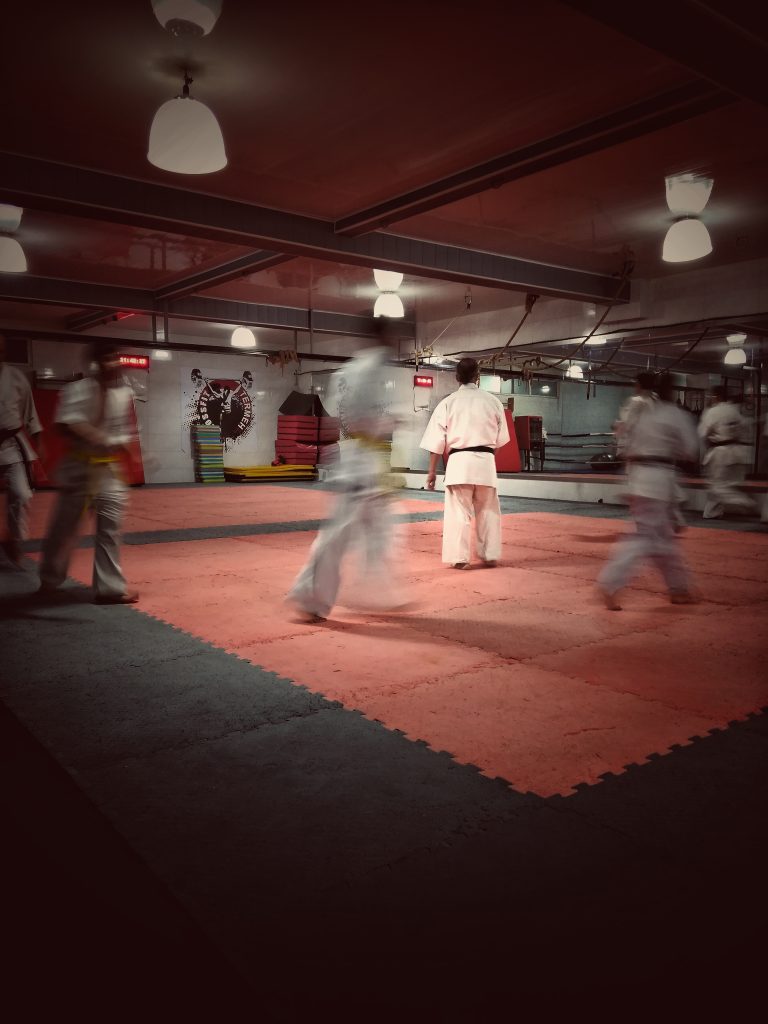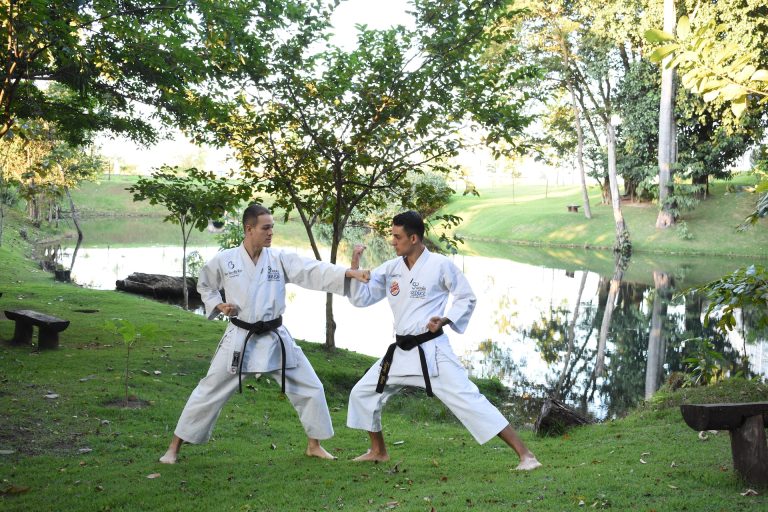Karate and its Movements: How to Move Properly
Karate is a traditional martial art originating from Japan. It is known for its explosive strikes and kicks, but also for its graceful movements. The martial art takes a lot of grace and fluid movements to execute effectively. In this article, we will discuss how to move properly in Karate.
The Importance of Proper Movement in Karate
Movement is everything in Karate, a slight mistake in movement can mean the difference between knocking an opponent out cold or missing the mark. Proper movement ensures that you have the right balance, coordination, and stability- all crucial for successful delivery of strikes and kicks.
Basic Karate Stances
To move properly in Karate, one must first master the various stances that form the foundation of the martial art. The basic stance is the Heisoku Dachi. In this stance, your feet are aligned together, with your arms by your side. Your toes should be slightly spread apart, while the heels are touching.
Another common stance is the Musubi Dachi, also known as the informal attention stance. Here, your feet are spread apart and your toes are pointing slightly outward. Your hands are clasped behind your back, with your thumbs interlocked.
Karate Movement Techniques
Karate has various movement techniques that are used to execute punches, kicks, and blocks effectively. These include:
Shuffling:
elevates the height of the attack, deceives the opponent, and widens the potential of the targeted area.
Sliding:
used to close the gap between you and your opponent quickly. It is essential in delivering knee strikes, punches, and kicks.
Stepping:
Used to create distance between you and your opponent. Stepping back also helps you avoid potential strikes and executes a counter-attack.
Jumps:
used to surprise and confuse your opponent. A well-executed jump can make your attack more powerful, but it can be risky since you become vulnerable in the air.
Tips on How to Move Properly in Karate
Here are some tips on how to execute the various movement techniques in Karate properly:
Keep your weight balanced:
ensure that your center of gravity is in the middle of your body. This ensures that you do not lose balance while executing movements or attacks.
Practice maintaining a proper posture:
Maintain proper posture, keep your shoulders and back relaxed while avoiding hunching or slouching.
Maintain proper breathing:
Inhale through your nose, and exhale through your mouth. Proper breathing ensures that your body is getting enough oxygen to enhance your performance.
Practice footwork:
Karate movements rely on solid footwork. Practice drills that involve stepping, sliding, and shuffling.
Practice regularly:
Like any other martial art, Karate requires regular practice to master its movements.
Conclusion
Proper movement techniques are crucial in Karate. By mastering the various stances and movement techniques, Karate practitioners can deliver powerful strikes and kicks while maintaining balance and stability. Remember to practice regularly and follow the tips shared in this article to become a successful Karate practitioner.
Karate and its Movements: How to Move Properly – FAQs
Karate is a martial arts form that originated in Okinawa, Japan. It not only helps people in self-defense, but also improves their physical and mental health. Karate movements are a crucial part of the training, and it’s essential to learn them properly to master Karate. Here are some frequently asked questions about Karate movements and how to move correctly.
1. What are the basic movements of Karate?
Karate has four basic movements – punches, kicks, strikes, and blocks. These movements involve a combination of upper and lower body muscles and require proper technique and coordination to perform accurately. It’s important to learn these moves by practicing them repeatedly under the guidance of a qualified instructor.
2. How do I improve my Karate movements?
Improving Karate movements takes time, patience, and dedication. Here are some tips to help you improve:
i. Practice regularly
The more you practice, the better you’ll become. Develop a consistent schedule and stick to it. Even if you can only practice for a few minutes each day, make sure you do it consistently for better results.
ii. Follow your instructor’s guidance
Listen to your instructor’s advice and feedback. They can help you correct your technique and identify areas that require improvement. Ask them for regular feedback and evaluate your progress accordingly.
iii. Focus on technique
Focus on perfecting your technique before adding speed or power. Proper technique is essential to effective Karate movements and prevents injury. Take time to understand the mechanics of each move and practice slowly.
iv. Incorporate strength training
Strength training can help you develop the muscles necessary for better Karate movements. Focus on exercises that target your core, upper body, and legs, as these are the areas you’ll use most in Karate.
3. What are the benefits of proper Karate movements?
Proper Karate movements can benefit you physically and mentally. Here are some benefits:
i. Improved flexibility and balance
Karate movements require a lot of flexibility and balance. Proper training can help you improve both, which can help reduce the risk of injuries and falls.
ii. Increased strength and endurance
Karate movements can help build strength and endurance as it uses multiple muscle groups. Continuous practice can help increase your overall physical fitness.
iii. Enhanced mental focus and discipline
Karate movements require focus, discipline, and patience. Regular practice can help improve your ability to concentrate and apply these traits to other areas of your life.
4. What are some common mistakes to avoid in Karate movements?
Mistakes in Karate movements can lead to injury or a lack of progress in your training. Here are some common errors to avoid:
i. Overextension
Overextension is a common mistake when performing Karate movements, especially with kicks. This mistake can result in strains, sprains, and other injuries. Always maintain control and precision when performing movements.
ii. Insufficient warm-up and stretching
Inadequate stretching and warm-up can lead to cramps or muscle strains. Take the time to warm up your muscles, and incorporate stretching exercises to prevent injuries.
iii. Lack of focus on technique
Focusing on speed or power without proper technique can lead to a lack of progress and inadequate development of your Karate movements. Always focus on the technique before trying to master speed and power.
5. Is Karate movement easy to learn?
Karate movements require time and dedication to master. You’ll need guidance from a qualified instructor, regular practice, and a lot of patience to learn and develop Karate movements. However, with commitment and hard work, anyone can learn and master Karate movements.
Conclusion
Karate movements are an important component of learning Karate. Proper technique, focus, and regular practice are key to developing your Karate movements effectively. To achieve the maximum benefit of Karate training, ensure you seek guidance from a qualified instructor and practice regularly.
Inhaltsverzeichnis





